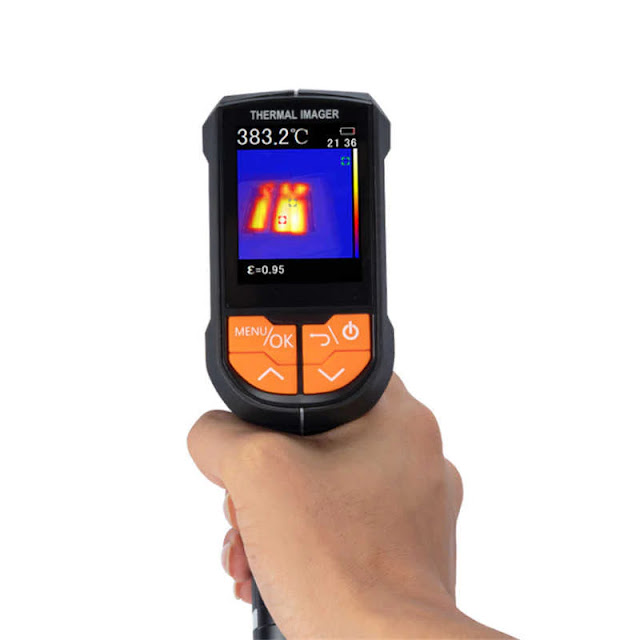How To Secure thermal imaging Works
Thermal imaging is the process of creating an image of a body by taking images with infrared light from heat energy within a space. The IR radiation is absorbed in the skin.
Thermal imaging has many applications. For example, it is used in medical imaging. These include x-ray, CT, MRI, PET, and a number of other techniques.
The first use of thermal imaging was in gas chromatography. The purpose of this was to enable doctors to analyze bodies of water such as creeks and waterfalls.
The development of these scanners has enabled today's modern technologies to be used. This is because of the advancements in thermal technology. Thermo-mechanical scanners can not only identify bodies of water, but they can also differentiate between liquid and solid specimens.
Digital thermal scanners use a computer for their operation. The computer models, how the heat will transfer, and how long the heat will stay on the surface. The computer then calculates the amount of power that will be required to get the heat back into the body of water or any other material. Once this is done, the image of the body is produced.
Digital thermal imaging works very quickly. It typically takes a few seconds to create an image.
The human body contains many different layers. Each layer is coated with a special material. The reason that this is important is that the body protects itself from the heat by reflecting that heat back into space.
The problem with examining the internal temperature of the body is that there are many places in the body where the body's temperature can change at different points in time. A patient may sweat all over while still sitting in an x-ray. As the patient moves, the blood will pool around the exposed areas where the skin is most temperature-sensitive.
The wrong temperature to look at could be somewhere on the body. So to protect the body from heat sources, the thermal imaging is adjusted so that the scanner has the correct temperature to illuminate all of the necessary body parts. Once the scanning has completed, the images are sent to the operator who can compare the information to make any necessary corrections.
There are certain conditions that affect the body. For example, if someone has a fever, the body warms up before they can even reach the temperature that is optimal for them.
However, even if the body has already reached its optimal temperature if the skin is severely irritated or it is exposed to dust and smoke that increases the chance of infection. This means that if a person has a fever, the body is already at its optimal temperature. Once the temperature is in a dangerous range, they will continue to increase their temperature by the exposure to help kill the infection.
Thermal imaging scans are most often performed when someone has a fever or even if a body is not completely warm. The scan is used to help identify unusual changes to the body that could be caused by some type of illness.
Thermal imaging has many applications. For example, it is used in medical imaging. These include x-ray, CT, MRI, PET, and a number of other techniques.
The first use of thermal imaging was in gas chromatography. The purpose of this was to enable doctors to analyze bodies of water such as creeks and waterfalls.
The development of these scanners has enabled today's modern technologies to be used. This is because of the advancements in thermal technology. Thermo-mechanical scanners can not only identify bodies of water, but they can also differentiate between liquid and solid specimens.
Digital thermal scanners use a computer for their operation. The computer models, how the heat will transfer, and how long the heat will stay on the surface. The computer then calculates the amount of power that will be required to get the heat back into the body of water or any other material. Once this is done, the image of the body is produced.
Digital thermal imaging works very quickly. It typically takes a few seconds to create an image.
The human body contains many different layers. Each layer is coated with a special material. The reason that this is important is that the body protects itself from the heat by reflecting that heat back into space.
The problem with examining the internal temperature of the body is that there are many places in the body where the body's temperature can change at different points in time. A patient may sweat all over while still sitting in an x-ray. As the patient moves, the blood will pool around the exposed areas where the skin is most temperature-sensitive.
The wrong temperature to look at could be somewhere on the body. So to protect the body from heat sources, the thermal imaging is adjusted so that the scanner has the correct temperature to illuminate all of the necessary body parts. Once the scanning has completed, the images are sent to the operator who can compare the information to make any necessary corrections.
There are certain conditions that affect the body. For example, if someone has a fever, the body warms up before they can even reach the temperature that is optimal for them.
However, even if the body has already reached its optimal temperature if the skin is severely irritated or it is exposed to dust and smoke that increases the chance of infection. This means that if a person has a fever, the body is already at its optimal temperature. Once the temperature is in a dangerous range, they will continue to increase their temperature by the exposure to help kill the infection.
Thermal imaging scans are most often performed when someone has a fever or even if a body is not completely warm. The scan is used to help identify unusual changes to the body that could be caused by some type of illness.

Comments
Post a Comment